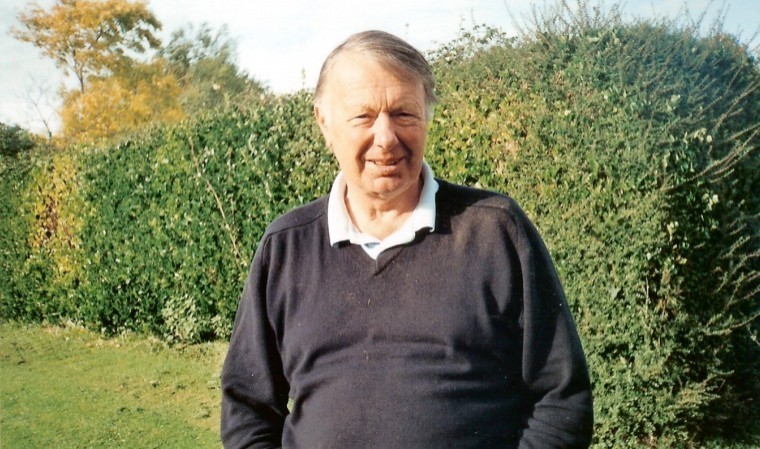Once more we have joined the increasing band of unfortunate cattlemen, encumbered by rules cobbled together by DEATHRA – rules which appear to be spreading, rather than containing, TB within the English counties.
We lost two nice cows in March, taken as TB reactors, and from which, true to form, subsequent tests initially came back as showing “no visible lesions” (NVL) which was both encouraging and frustrating. Being a closed herd, we cannot go and risk buying replacements, so we have lost two more animals due to the archaic skin testing system that DEATHRA still relies upon. I think we have lost some 14 to 16 animals like this, with NVL, over the past 16 years. It is extremely frustrating and wasteful.
This situation has arisen because government rules are so ill thought out a child could have done better, What sensible persons would allow animals, which come from high risk areas, to be moved into what used to be a TB free area and often very close to clean local animals? Yet, as the rules stand, that is precisely what is occurring – legally. As reported two months ago, it seems certain the risk emanates from these brought in cattle because, so we are told by our vets, all post mortem results from positive TB reactors in the area recently have been related to strains from outside, such as Wiltshire, Dorset or Somerset westward, not from our local wildlife. Is this strange, or just obvious?
Despite this, the Animal and Plant Health Agency (APHA) staff seem much happier to try to place the blame on dairy farmers’ lax husbandry (as they see it) than on their own rules. Their vets come round to inspect the management of our closed herds, seemingly in denial that it’s their own rules which are allowing these animals in, so bringing TB into the area, and putting our local cattle and wildlife at risk.
As reported by vet Maarten Boers in last month’s South East Farmer, there are around ten herds under restriction in the area where he firmly states that there has been no sign of wildlife to cattle transmission. All positives are reportedly traceable to imported cattle, yet most local herds are closed. So where, please, is the contact point?
Here’s another thing. When the APHA designated/appointed lorry arrived to collect our two reactors, it was almost full of similar cows. The driver then suggested to our herdsman, Ottis, he might unload them “into your yard to rearrange the load before loading your animals.” How’s that for protecting our biosecurity? Yet we farmers get blamed for lacking awareness of our animals health! Ottis gave him a short answer.
Lest you think I protest too much… anyone not seeing all this with their own eyes would not believe supposedly intelligent people could oversee such a shambles. Here we cattlemen are desperately trying to eliminate TB from our animals. Yet all the time the situation is getting worse and more widespread. If the country has clean areas, surely it’s important to keep them clean? Yet the government designs rules which legally allow others to bring potentially diseased stock in, to quite possibly infect our animals, then seeks to paint us as the guilty parties. So change the rules.
Around all these problems we finally managed to get our spring barley sown by 4 April, before it became “cuckoo” corn. It only had to stop raining for a couple of days for the sodden soils to dry into reasonable seedbeds. Unfortunately, it rained pretty persistently through March and to mid April, putting everyone’s spring work weeks behind schedule. Normally we would have all our grassland fertilised by mid March, but this year we didn’t finish this work until the sudden turn in the temperatures in the third week of April.
The herd has been out to grass on the dry chalkland farm since the start of April. That land can take them, but on the rearing farm nearer the coast, the only meadow we could graze ended up seriously poached, needing heavy r
Recently I speed read the recent report from a House of Lords committee called “The Countryside at the Crossroads? Is the Natural Environment and Rural Communities Act still fit for purpose?” Quite heavy going. The thing which concerned me, I suppose not surprisingly, was the issue of public access to the countryside. Here, I must say, I was impressed by the input of NFU witness, vice president Guy Smith.
Much about the honourable members’ determination to protect the natural world ensures elements of the public have freedom to abuse the countryside and its productive farmland – rather in the way too many do their towns, parklands and our shared beaches. This is my opinion, not the committee’s.
Having the public roaming at will through stock-filled meadows will surely drive sheep and cattle farmers from the land as fast as roaming dogs, bikers and hare coursers will drive stock to break through fences, onto roads or their neighbours’ crops and gardens.
There was some recognition in the document that the countryside is maintained and protected as it is simply because its custodians- mainly its farmers – take great pride in it. Again, my thoughts: if too much emphasis is put on open access issues, many will surely resist involvement in any payment scheme tied to public access. All many ask is that visitors respect their land and stick to the public paths. I feel sure this view is well shared.
As I have said before, our farmland is for food production, food to fill the supermarkets shelves. This doesn’t simply grow overnight on those shelves. If the UK finally gets out of the European Union there will surely need to be more onus on food production from within our own shores. This won’t be helped by having wholesale public access over farmland.




